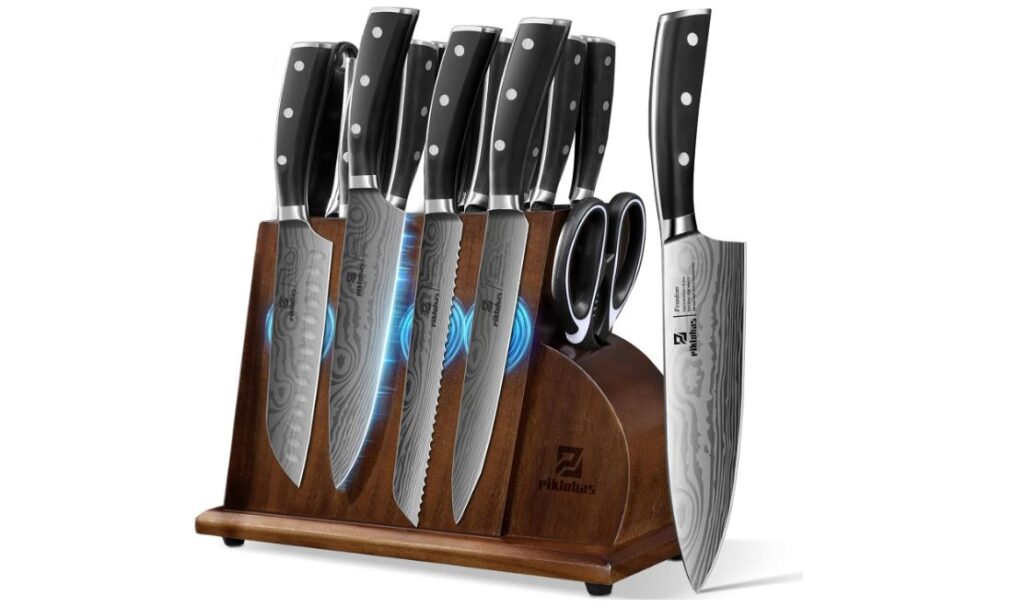There’s no contesting the fact that kitchen knives are a staple in every kitchen. Whether you’re a professional chef or an excited home cook, the right kitchen set makes all the difference in cooking. As much as you might want to know about kitchen knives, everything from selecting the right one to proper maintenance, this is the article for you.
Types of Kitchen Knives
Each serves a different purpose, but varies in terms of shapes and sizes. Let’s look at several of the most common kitchen knives types:
1. Chef’s Knife
Perhaps the most versatile knife is the chef’s knife, which can be found within the kitchen walls. It typically runs from 8 to 10 inches in length. In use, it can chop, slice, or dice. Western chef knives are more massive in weight, exerting more force at impact due to the mass giving force behind the blow. The Japanese counterparts, such as the Gyuto, however are lighter and stay sharper much longer.
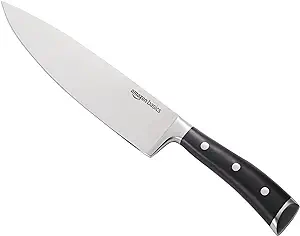
2. Santoku Knife
A Santoku knife is shorter and lighter and actually serves as a substitute for the size of a chef’s knife. It works perfectly for doing precision work such as slicing vegetables or cutting pieces of meat. With its straight-edged blade, it is suited for fast cuts to get it all done in the most efficient way possible. This knife is very popular in its versatility and ease of use.
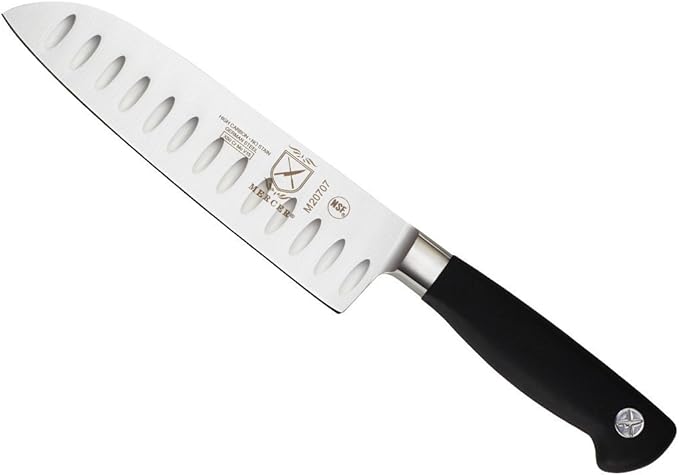
3. Bread Knife
A bread knife is a knife for creating an advantageous serrated edge, slicing through bread without squashing the soft interior. It’s also a good cutter of delicate things, such as cakes or tomatoes.
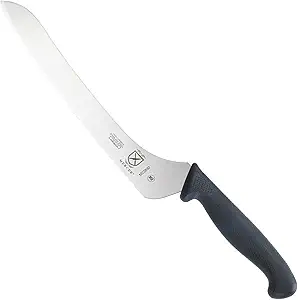
4. Paring Knife
A paring knife is a small knife with a 3-4-inch blade. It is very well suited for tasks that require refinement, such as peeling, coring, or mincing small items. With the shortness of the blade, accuracy is slightly enhanced, especially in detailed work.

5. Utility Knife
The utility knife is a perfect knife because it is in the middle range in terms of size between a chef’s knife and a paring knife, meaning that its utility is well-suited for jobs that are not as large in scope for a paring knife but yet require more precision than for using a chef’s knife. It is great for cutting sandwiches, fruits, and middle-sized vegetables.
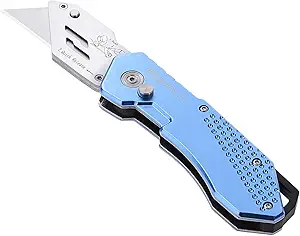
6. Nakiri Knife
A Nakiri knife is a specialist in preparing vegetables, with the straight blade suited best for cutting through vegetables with minimal resistance. A flat edge will cut vegetables perfectly and evenly, making this knife ideal for precision work when handling a large amount of vegetables.
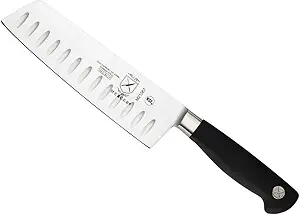
How to Choose the Right Kitchen Knife?
When choosing the right kitchen knife, there are several important factors that you must consider. Here’s what to look for in a new knife:
1. Blade Material
Material in the blade The material in the knife blade majorly influences the sharpness of the knife, durability, and the convenience of maintenance. Several knives are made from high-carbon stainless steel. Such materials are predominantly used and liked since they hold sharp edges with reduced rust. Some premium knives contain multi-layered steel, such as Japanese Damascus steel. In this case, the strength and sharpness of knives improve.
The comfort of a knife would primarily depend on its handle. A good handle is one that would give a nice feel in the hand, with sufficient grip. More so, ergonomic handles prevent hand fatigue in case the knife is used for a long time. Textured or rubberized grips also provide more security, which reduces the possibility of slipping.
3. Blade Shape
The shape of the blade will define how to use the knife. Curved blades are good for chopping because the motion has to be rocking, whereas straighter blades are more matched for slicing. For example, Chef’s knives have some little curvature of the blade and are suited for rocking back and forth while chopping. Santoku knives are very straight-edged, ideal for precision slicing.
4. Knife Size
The size of the knife matters. Bigger knives like 8 or 10-inch chef’s knife are good for bigger tasks, such as big vegetables or meat cutting. Conversely, for detailed work paring or utility knives are good.Consider your comfort and your hands size to choose which length is best for you.
Best Knife Sets for 2024
If you’re looking to invest in a full set of knives, here are some of the best out there in 2024:
1. Zwilling Professional S 7-Piece Block Set
These German-made knives include a chef’s knife, a paring knife, and a bread knife. It also comes with kitchen shears and a honing rod. These knives more long-lasting and show good retention of edge with high-carbon stainless steel blades.
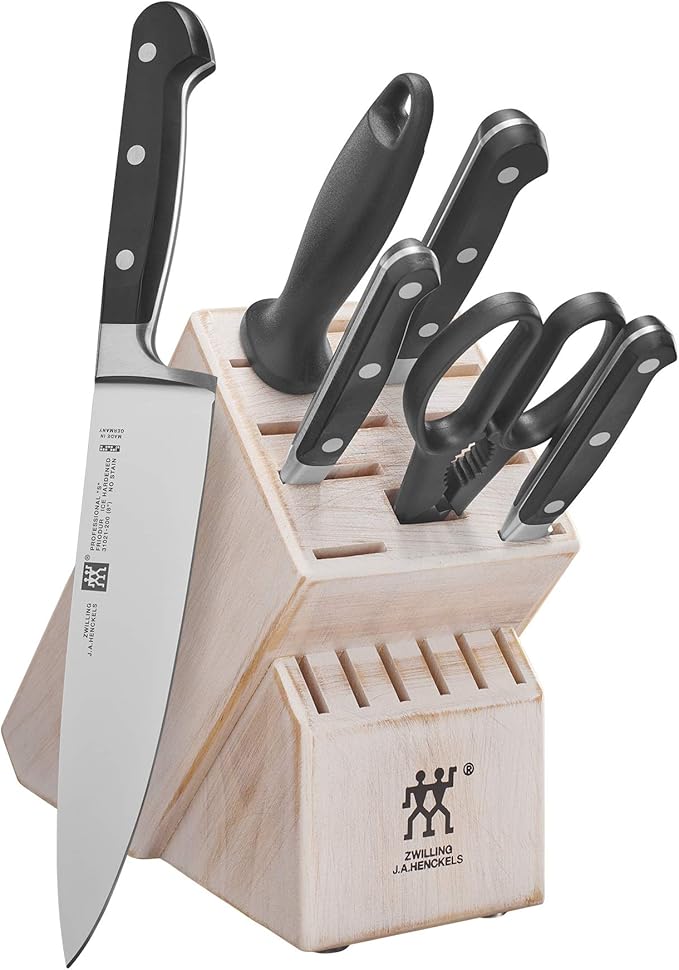
2. ProCook Gourmet Kiru Knife Set
ProCook offers an affordable set that includes several knives for various tasks. The stainless steel block is a stylish and practical place to store the knives and features ergonomic handles for comfort during long periods of use.
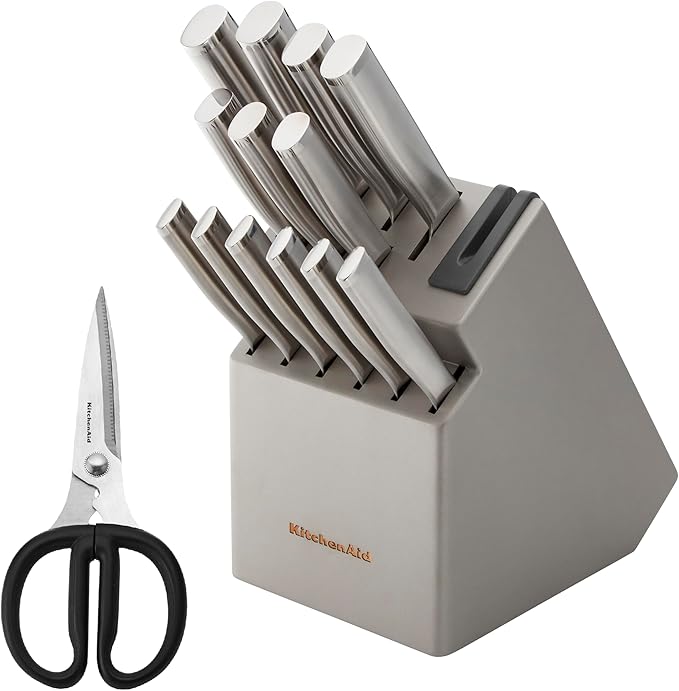
3. HOBO 15-Piece Japanese Knife Set
If you want a really complete knife set, the HOBO 15-piece is a really good choice. It has everything you’ll need, in a pretty wooden box. Each is hand-forged to give quite a lot of life with their sharpness and precision.
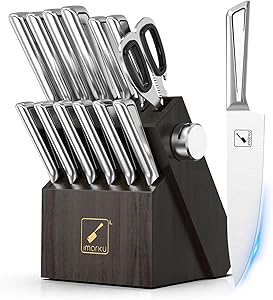
Care for Your Kitchen Knives
If you want your knives to be well for a long time and they will stay sharp, maintain good care of them.
1. Sharpening
Even the sharpest knives will eventually grow dull with regular use. It is therefore essential to hone them regularly so that cuts are sharp and food preparation becomes easier. A honing rod can be used between sharpening sessions to realign the blade. However for more effective sharpening, you should make use of a whetstone or take the knives to a professional for sharpening.
2. Proper Storage
Sharp knives need proper storage to last long. Storing them loosely in a drawer dulls and damages the blades. Knife blocks, magnetic strips, or individual protective sheaths are the recommended places to store your knives.
3. Cleaning
Clean your knives by hand in warm, soapy water and dry them immediately. Avoid placing knives in the dishwasher as it exposes them to extreme heat and caustic detergents that may damage the blade as well as the handle. Proper cleaning can help in preventing rust and maintaining the sharpness of the knife.
Conclusion
Kitchen knives are essentials in any kitchen. From the versatile chef’s knife to the Nakiri and Santoku knives-all special knives-properly set knives tend to enhance cooking experience; using fine materials, comfortable ergonomic designs, and proper use and care will ensure the blade lives to see you through a thousand meals. In fact, whether it is a professional person or an amateur in the kitchen, good quality knives are, by far, one of the most sensible investment decisions to be made in the pursuit of good culinary skills.

